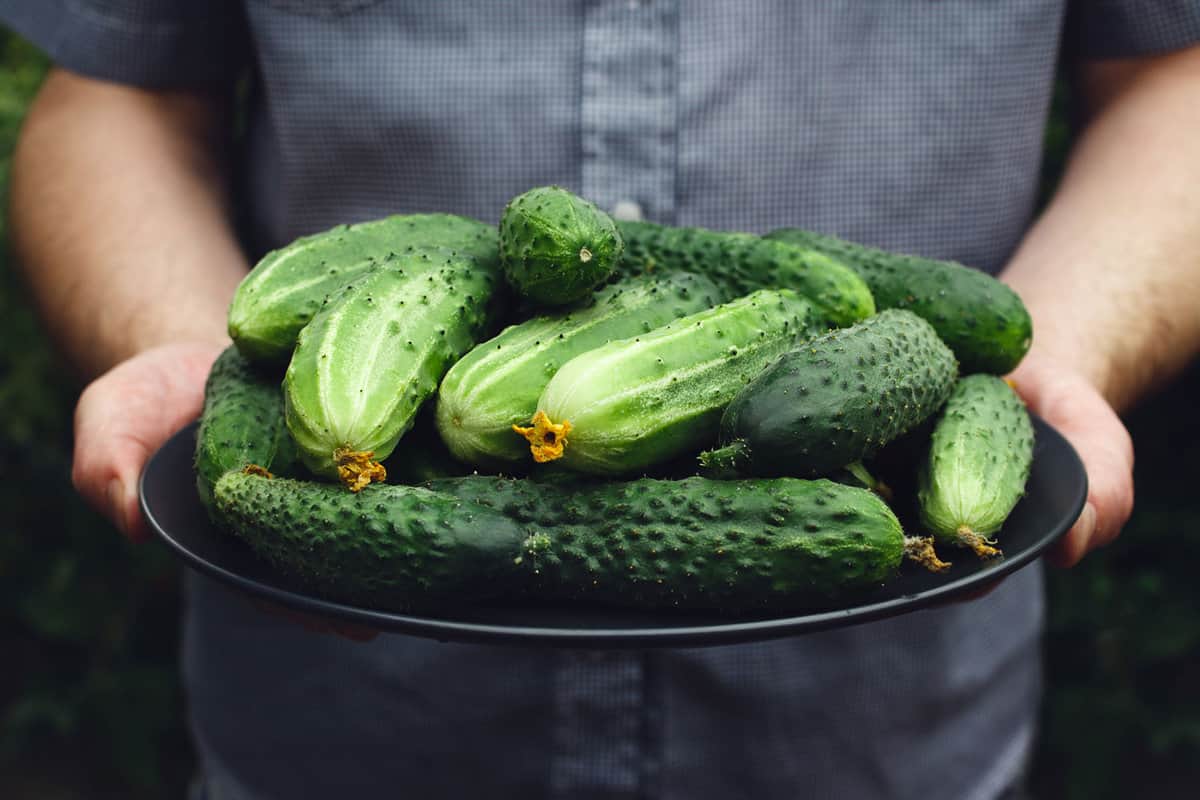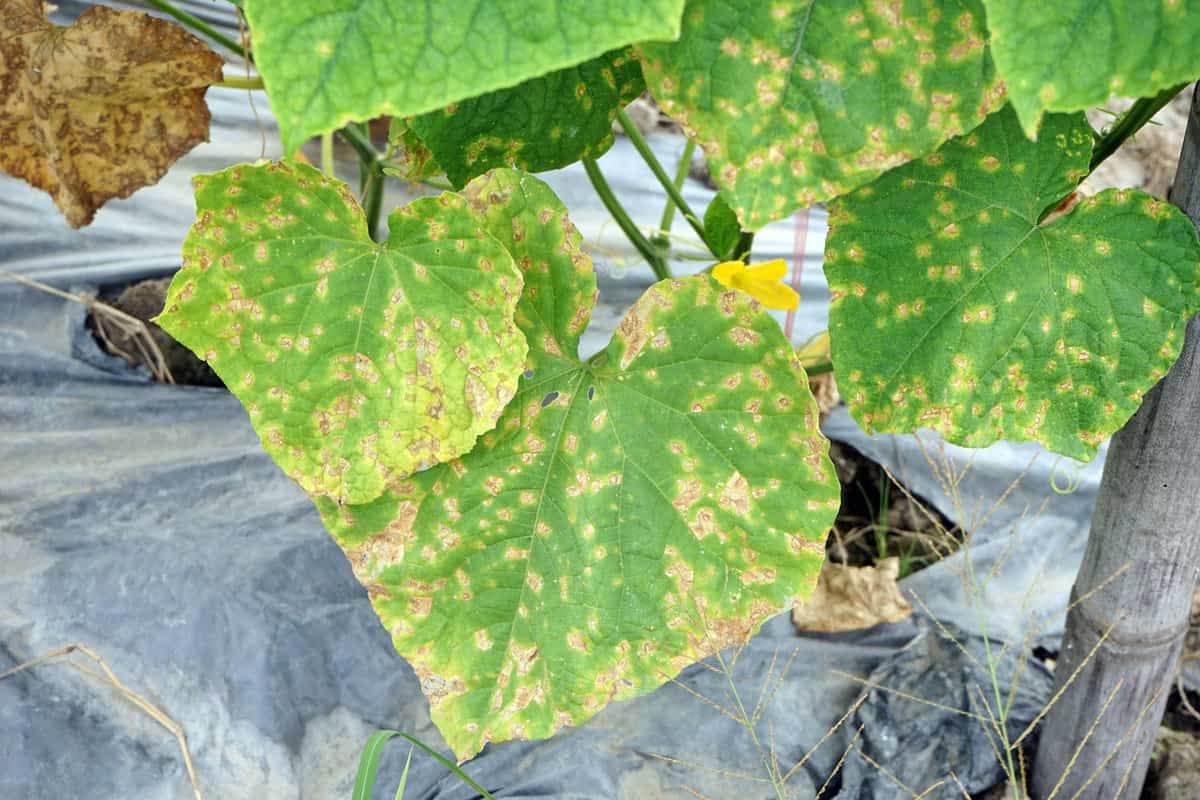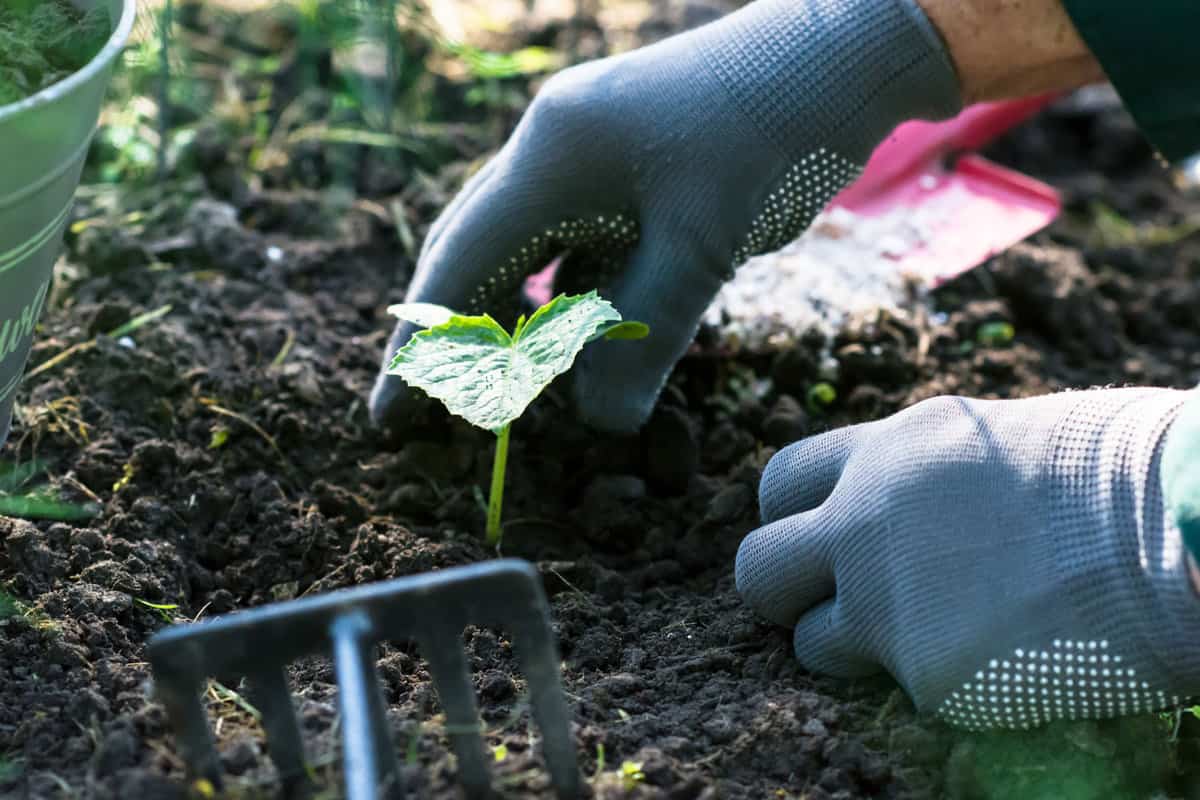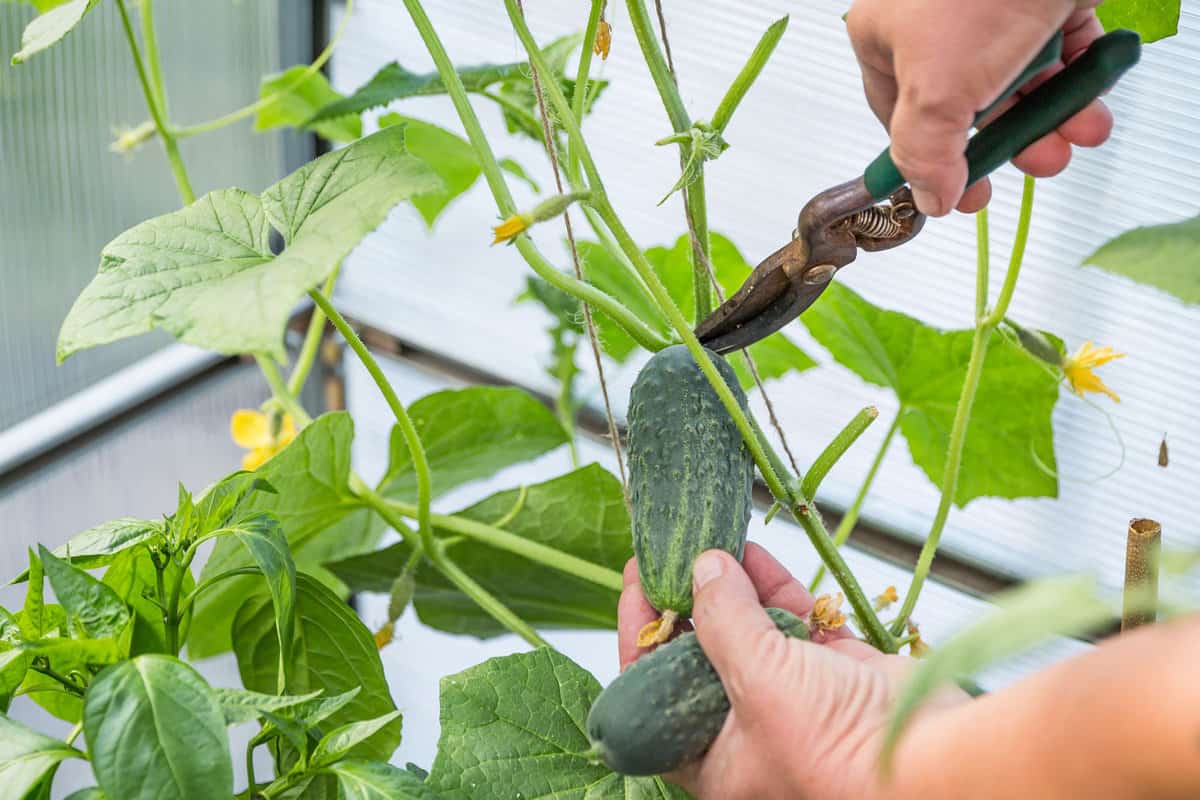Are your cucumber plants playing hard to get? Don't worry, we've got the inside scoop on when these refreshing veggies stop playing the field.

Get ready to dive into the secrets of cucumber production and discover the factors that can make or break your harvest.
From temperature tantrums to nutrient nourishment, this article dives into the cucumber's world, equipping you with the knowledge to enjoy a bountiful harvest.
Let's crack open this cucumber conundrum!
When Do Cucumbers Stop Production?
Cucumbers can be a delicious and refreshing addition to your garden, but it's essential to know when they stop producing.
Most varieties of cucumbers will stop producing after about 2 months. For instance, an Armenian cucumber typically ceases production in around 8 weeks, while an English cucumber can take up to 12 weeks.
However, keep in mind that the length of the growing season can be affected by your local climate.
Signs of Declining Production
The decline in your cucumber production can be quite alarming, especially if you've spent time and effort cultivating your plants.
Cucumber Yield
One significant indicator of declining production is a decrease in cucumber yield.

Over the past 20 years, fresh market cucumber production in the United States has been steadily declining, with fruit production dropping by 71% between 2000 and 2020.
Keep an eye on your own garden's output as well. If you notice that your cucumber plants are producing fewer fruits each season, it's a good indication that production is on a downward trend.
Plant Deficiency Signs
Apart from the overall reduction in yield, you may spot some signs of deficiencies in your cucumber plants that could be affecting production rates.
A few of the common deficiency symptoms include:
- Yellowing leaves: If you notice the older leaves on your cucumber plants turning yellow, it can be an indication of nitrogen deficiency.
- Leaf curling: Curling or distortion of leaves may indicate a lack of potassium or calcium.
- Leaf spots: Dark spots or patches on your cucumber leaves can be a sign of magnesium deficiency.

Nutrient deficiencies affect your cucumber plants' overall health and productivity, which could lead to a reduction in production.
Monitoring your plants' health and taking steps to correct deficiencies can help improve your cucumber yield over time.
Factors Affecting Cucumber Production
Cucumbers are sensitive to temperature, and maintaining the right conditions is critical for successful growth and production.
Temperature Conditions
Ideal temperatures for cucumber growth are between 65°F and 75°F, while nighttime temperatures should not drop below 60°F.
At temperatures above 90°F, your cucumbers may experience reduced pollination and fruit set, while temperatures below 50°F can cause chilling injury, leading to stunted growth and reduced yield.
To help maintain optimal temperature conditions for your cucumber plants:
- Monitor outdoor temperatures and provide shade or ventilation when needed.
- If possible, utilize greenhouse cultivation to create a controlled environment.
- Be cautious with irrigation and fertigation, as these can affect temperatures and humidity.
Plant Stress
Stress on cucumber plants can come in several forms, including water stress, nutrient stress, and pest pressure. Addressing these sources of stress early on can help improve your cucumber production.
Water Stress
Cucumber plants need consistent moisture but also require well-draining soil. Over- or under-watering can lead to reduced yield and fruit quality.
To optimize water management for your plants:
- Monitor the soil moisture levels regularly and adjust watering schedules accordingly.
- Consider implementing a drip irrigation system to provide water consistently and evenly across your plants.
- Be mindful of evapotranspiration rates, as these can impact water stress on your plants.
Nutrient Stress
Ensuring your cucumber plants receive the proper nutrients is essential for maximum yield and growth.
A balanced supply of macronutrients (nitrogen, phosphorus, and potassium) and micronutrients (calcium, magnesium, and iron) is necessary for healthy plant development.
To address nutrient stress in your cucumbers:
- Conduct regular soil tests to ensure they contain adequate nutrients.
- Apply appropriate fertilizer mixtures based on your soil test results.
- Keep in mind that over-fertilizing can also harm your plants, so be cautious with your nutrient application rates.
Pest Pressure
Pests, including insects, diseases, and weeds, can significantly impact your cucumber production.
Keep your plants healthy and productive by implementing integrated pest management practices. These may include:
- Regularly inspecting your plants for signs of pests and disease.
- Employing cultural practices, such as proper spacing and crop rotation, to decrease pest populations.
- Utilizing mechanical controls (like hand-picking pests, or organic/biological controls, like releasing beneficial insects) to reduce pest pressure without causing harm to the plants.
By addressing these factors and maintaining a favorable environment for your cucumber plants, you can help ensure a successful production season.
Disease and Pest Management
Cucumbers can be affected by various diseases, leading to a decline in production.
Common Cucumber Diseases

Some of the most common diseases include:
Powdery Mildew
Caused by the fungus Podosphaera xanthii, this disease appears as white powdery spots on leaves.
You can consider using biological control methods like Trichoderma harzianum, T. viride, Bacillus subtilis, Paenibacillus polymyxa, and Serratia marcescens to combat this issue.
Bacterial Wilt
This disease is caused by bacteria and is characterized by the wilting and yellowing of cucumber leaves.
Make sure to practice good sanitation, such as removing infected plants and improving soil drainage, to control its spread.
Downy Mildew
Caused by the fungus-like organism Pseudoperonospora cubensis, downy mildew is characterized by yellow spots on the upper leaf surface and a fuzzy, grayish-white coating on the underside.
Preventing standing water and using disease-resistant cultivars are crucial steps in managing this disease.
Pest Prevention Strategies
Cucumber pests can be detrimental to your plant's health and productivity. Here are some simple strategies for protecting your cucumbers from these pests:
- Crop rotation: Rotate your cucumbers with non-host plants to break up pest cycles and prevent the build-up of pests and diseases source.
- Physical barriers: Installing row covers or insect-proof nets can help keep pests off your cucumber plants.
- Regular inspection: Keep an eye on your plants for any signs of pests or damage. Timely detection can make it easier to manage pests before they cause severe harm.
- Biological control: Consider using natural predators, like ladybugs and lacewings, to help control pest populations in your garden.
- Chemical control: If pest populations are causing significant damage, you may need to use pesticides. Always opt for the least toxic options and follow label instructions carefully.
By implementing these disease and pest management practices, you can maintain the health of your cucumber plants and ensure continuous production throughout the growing season.
Tips for Improving and Prolonging Production
Here are some tips to improve and prolong cucumber production.
Enhancing Soil Quality

Start by focusing on the soil quality. Cucumber plants thrive in soil with moderate levels of nitrogen (N) and higher amounts of phosphorus (P) and potassium (K).
It's essential to maintain a balanced N, P, and K ratio for optimal growth. Regularly test your soil and apply the necessary amendments to achieve a balanced nutrient profile.
Additionally, remember to rotate your crops to prevent the buildup of harmful pathogens and maintain soil health.
Appropriate Water Management
Proper irrigation is crucial for the success of your cucumber plants. Ensure that your plants receive adequate and consistent water, with a focus on the root zone to avoid wetting the leaves.
This helps prevent diseases and maintain the correct moisture level in the soil. Drip irrigation systems can be beneficial in achieving efficient water management.
Monitor weather conditions closely to adjust your irrigation practices accordingly.
Pruning Techniques
Practicing efficient pruning techniques can significantly impact your cucumber production.

Regularly inspect your plants and remove any unhealthy, yellowing, or dead leaves to promote better ventilation and light penetration.
When pruning cucumbers, pay special attention to the side shoots and tendrils. By removing excess side shoots, you can direct more energy toward fruit production.
Strategically thinning your cucumber plants will help improve air circulation, reduce the risk of diseases, and ultimately lead to more fruitful production.
Harvesting Happiness: When Cucumbers Bid Farewell to Fruitful Days

If you want a bountiful cucumber harvest, understanding when cucumbers stop producing and the factors that influence their growth is essential.
Most varieties take a bow after about two months, but hold your horses—it can vary depending on your local climate.
Temperature conditions, water and nutrient management, and pest control all play crucial roles.
Remember to monitor your plants for signs of declining production and take steps to address deficiencies.
With these tips in mind, you'll be on your way to a successful cucumber harvest that will keep you refreshed all summer long.
Here are more posts to enjoy!
Can Cucumber And Tomato Grow Together? Exploring Companion Planting
Can You Eat Cucumber Seeds? A Quick Guide For Healthy Snacking
